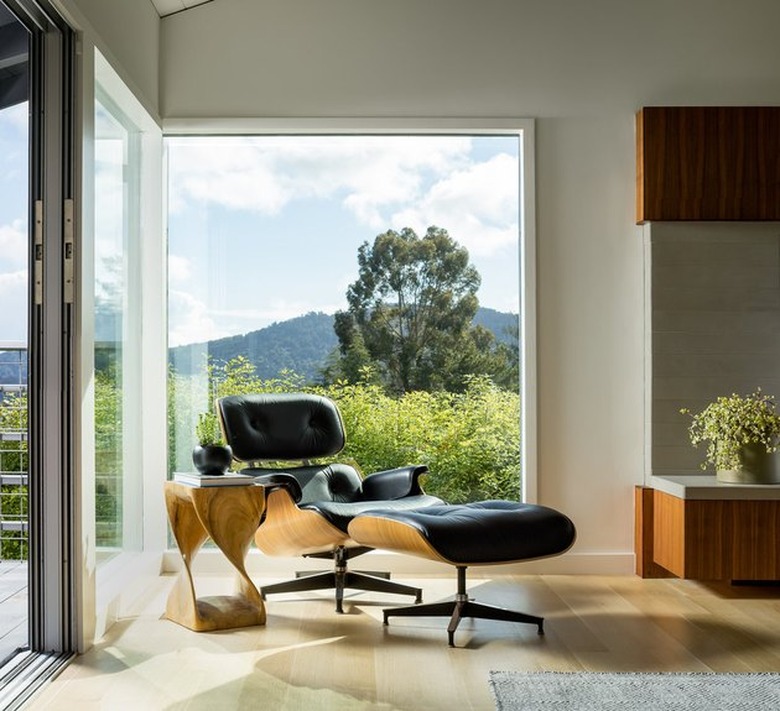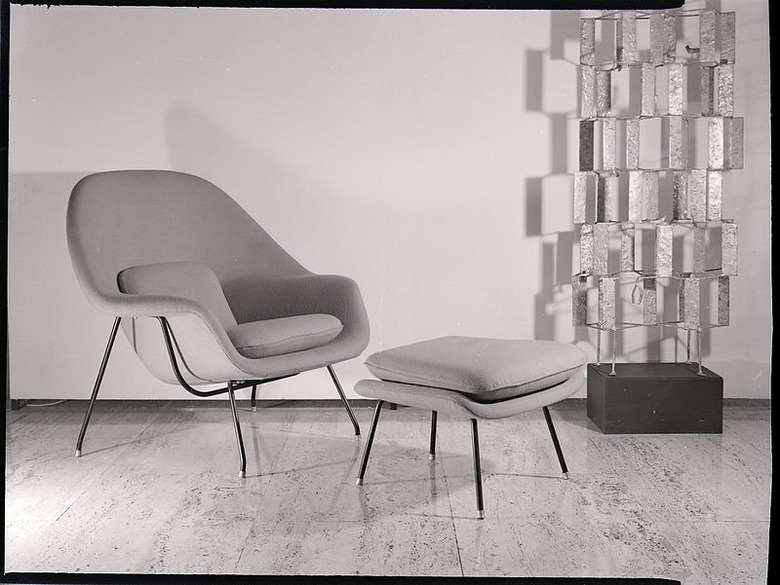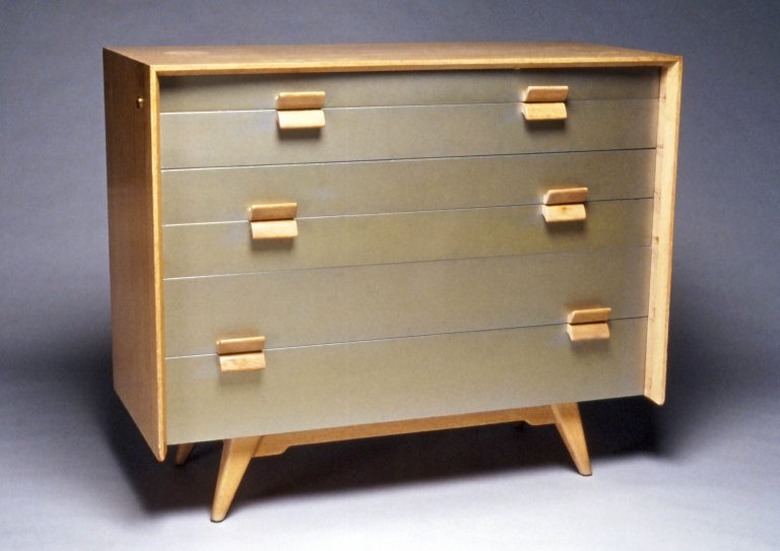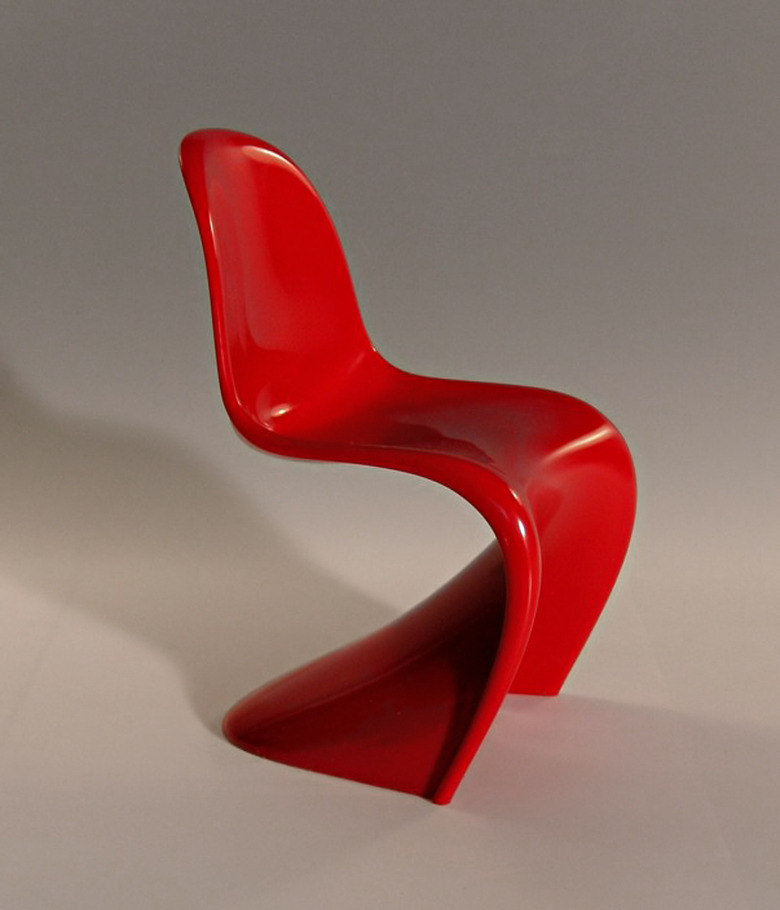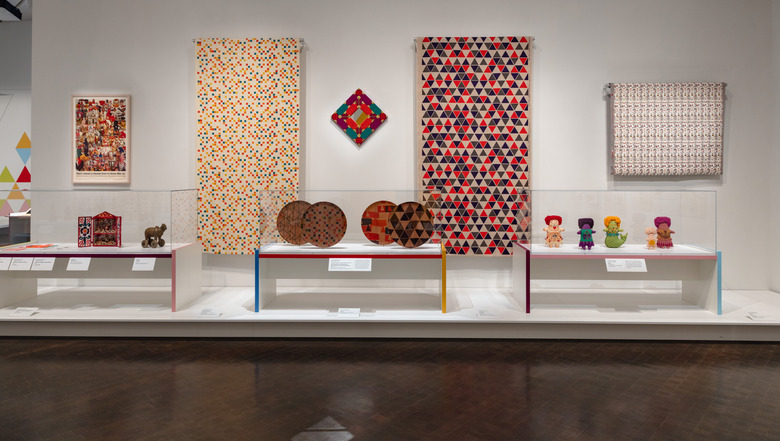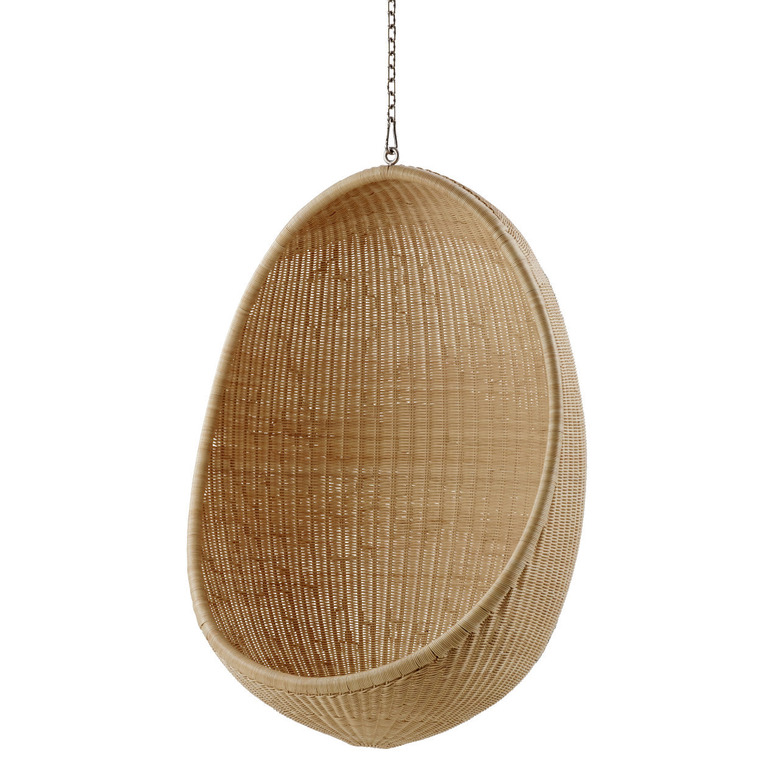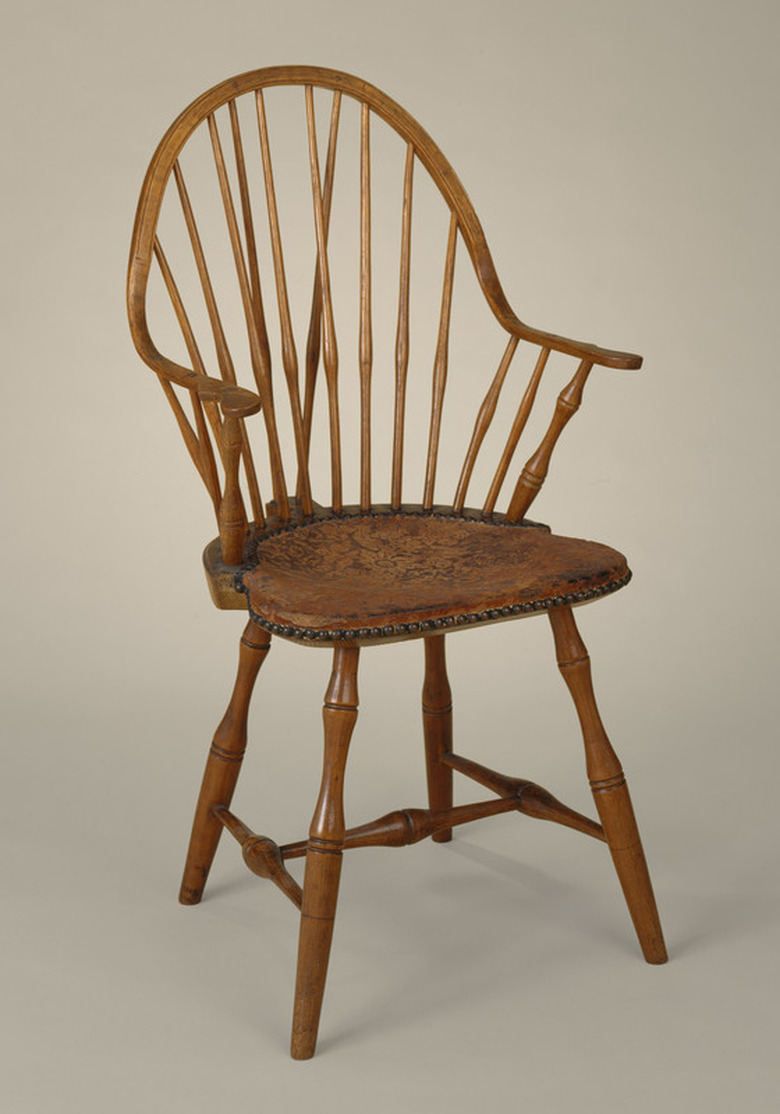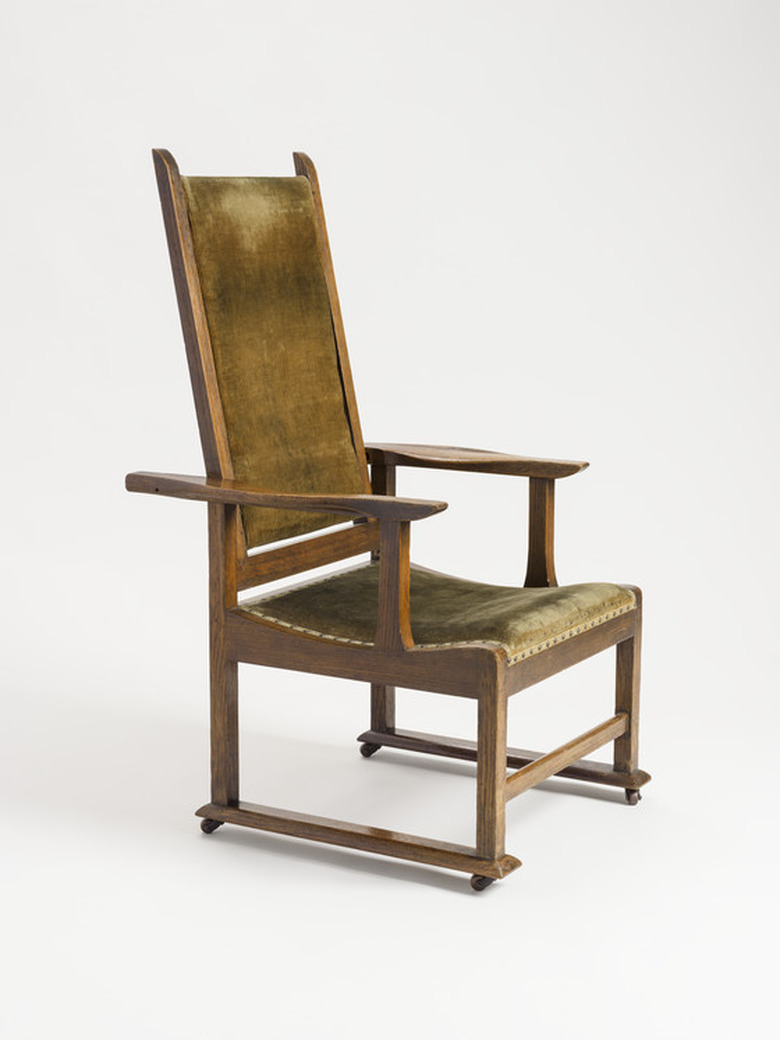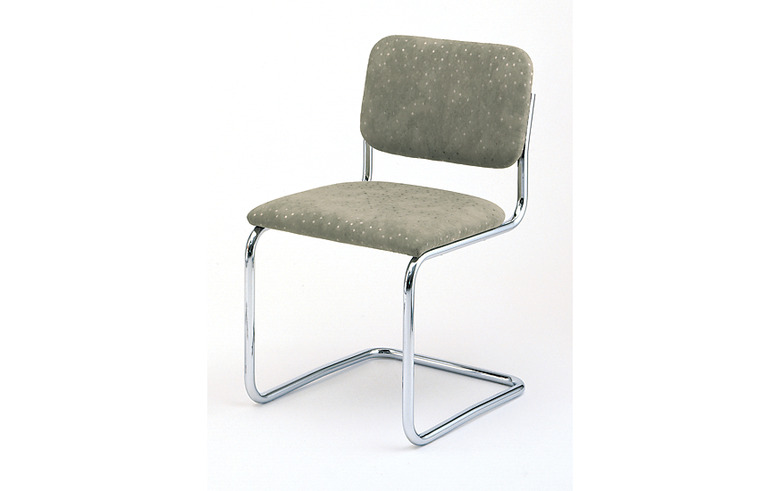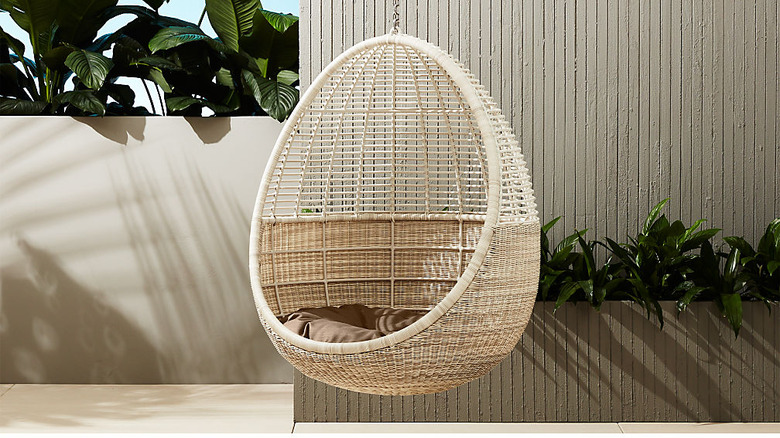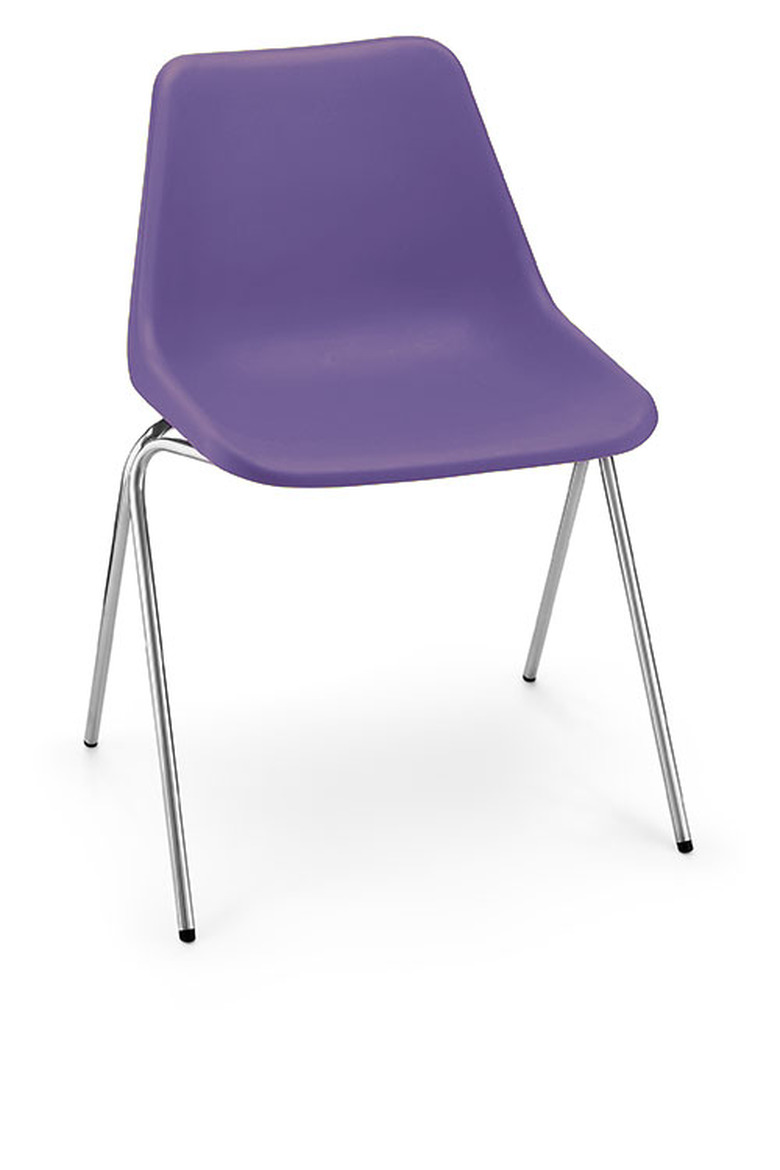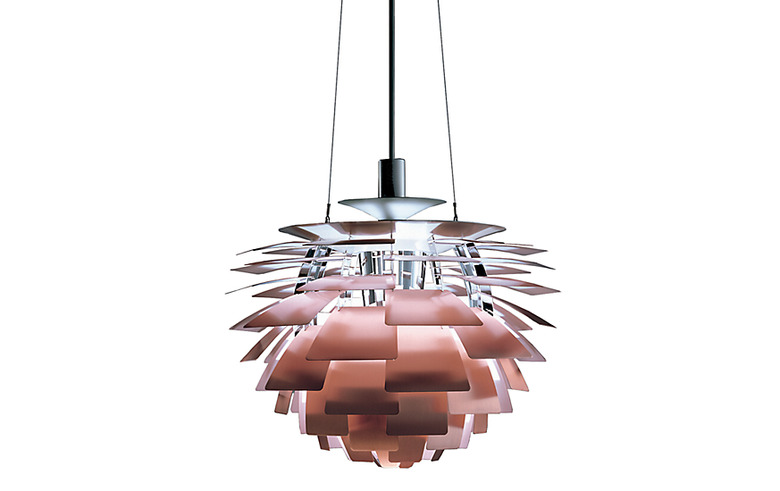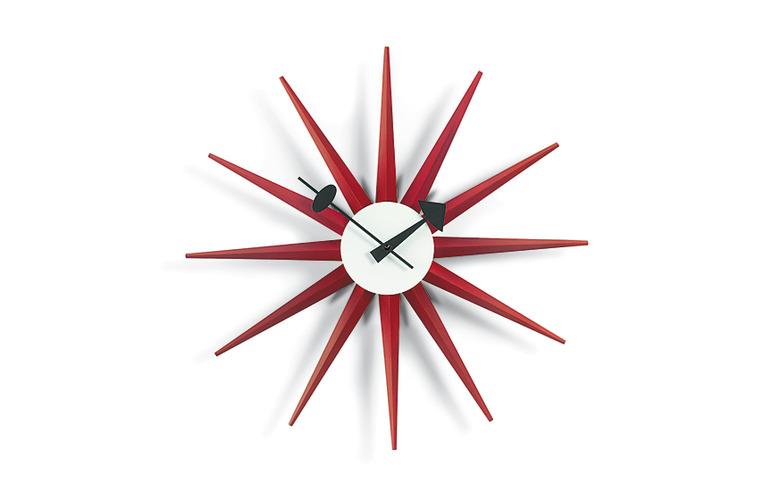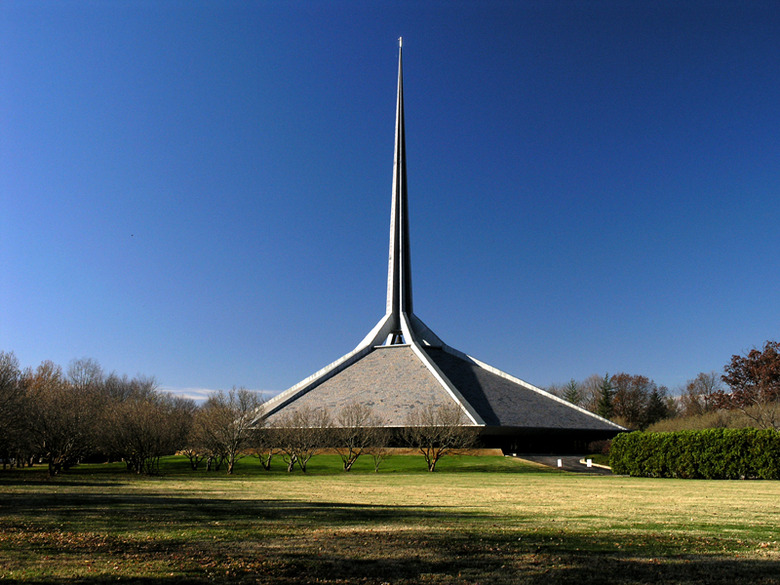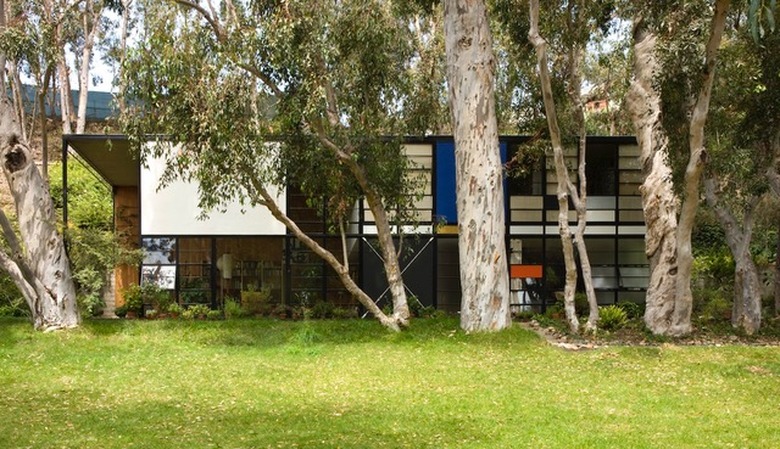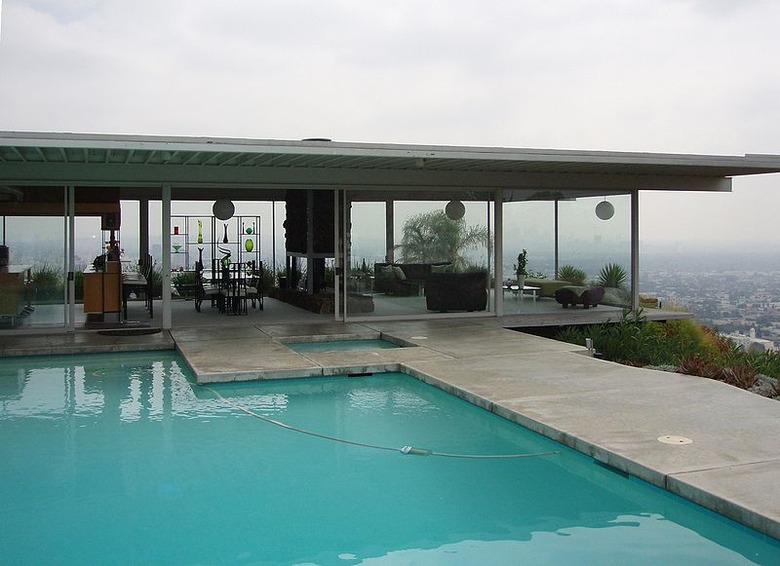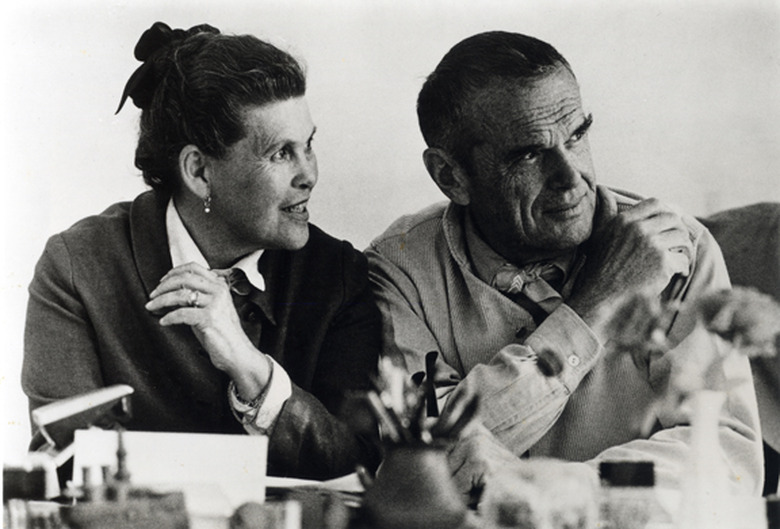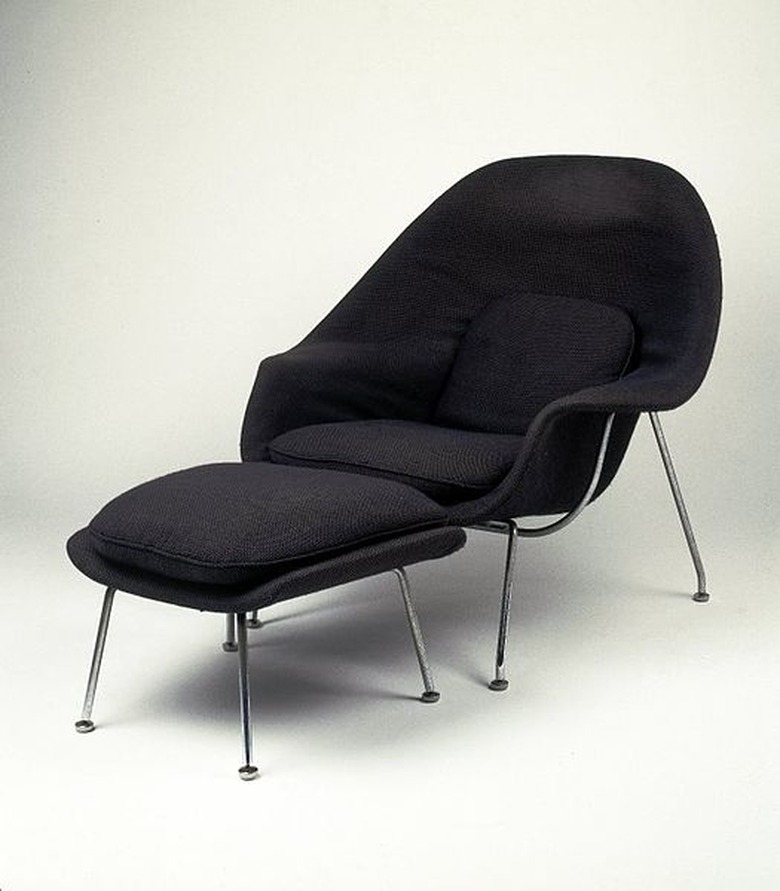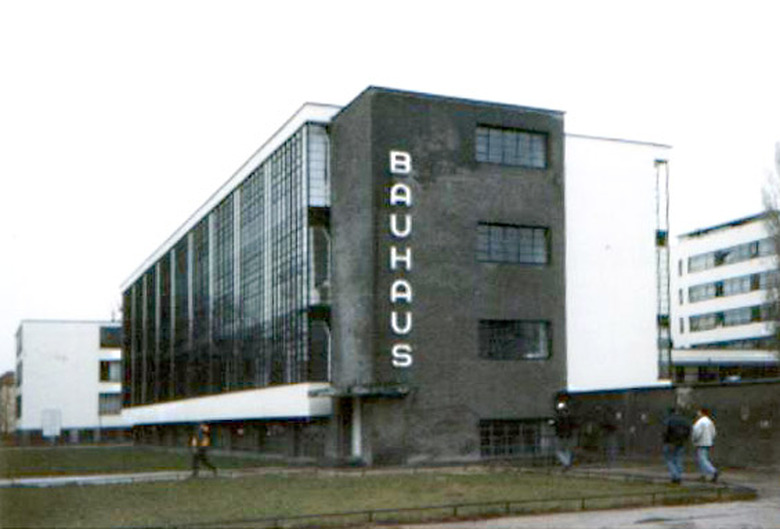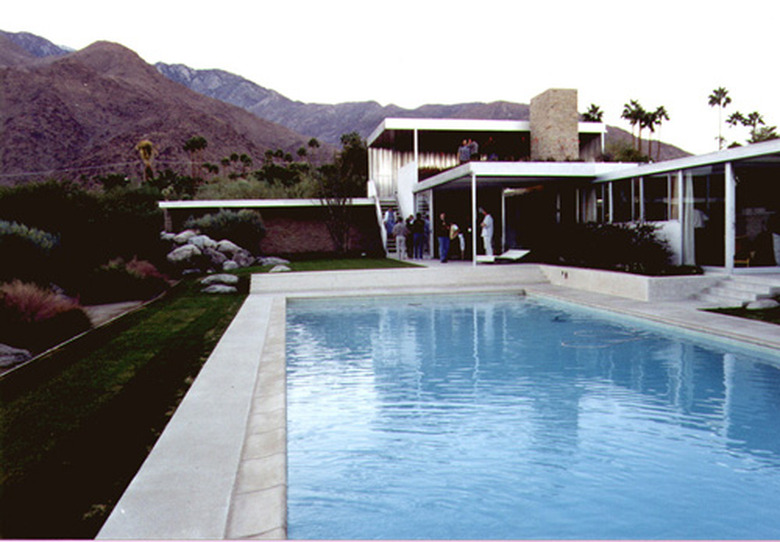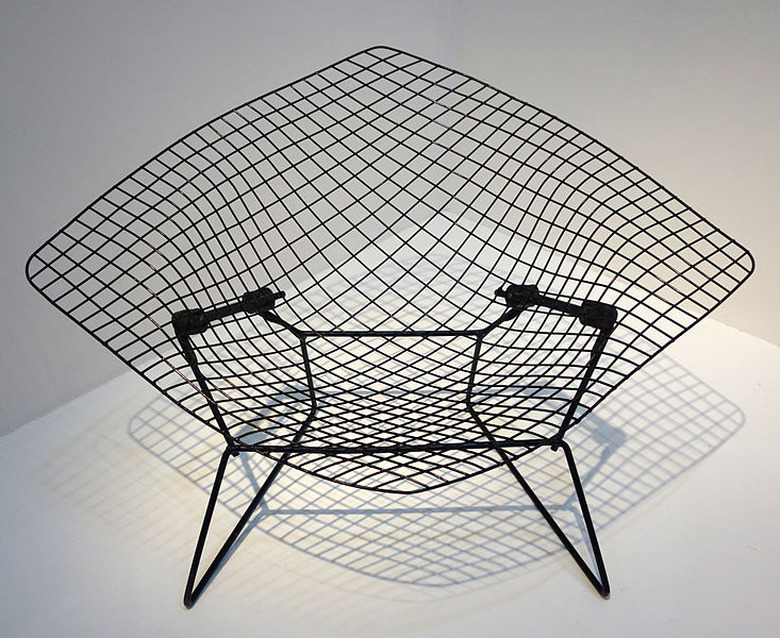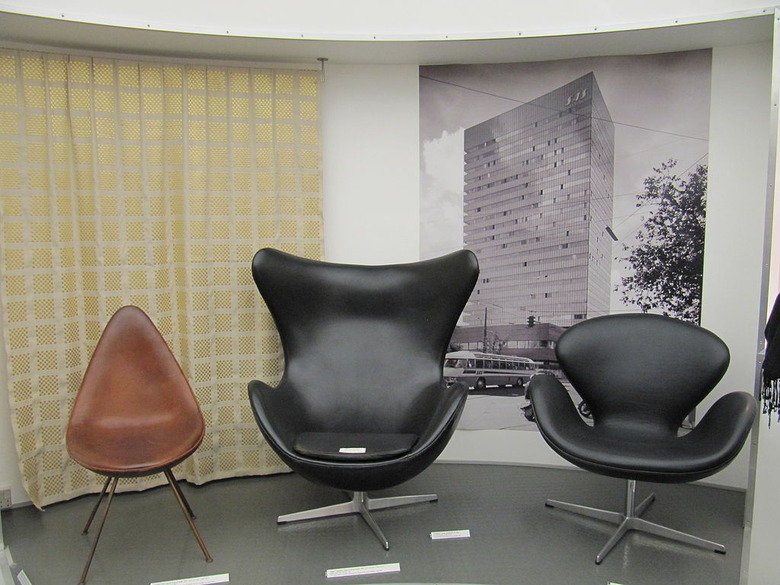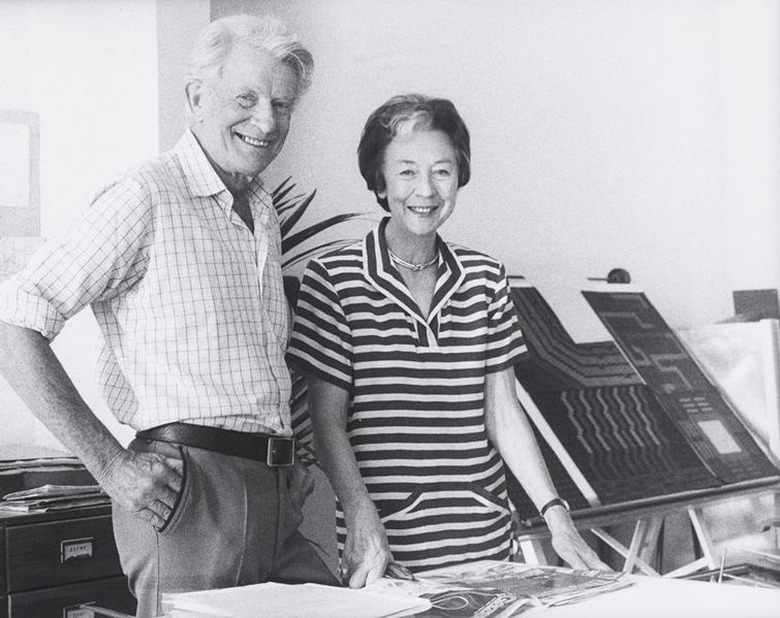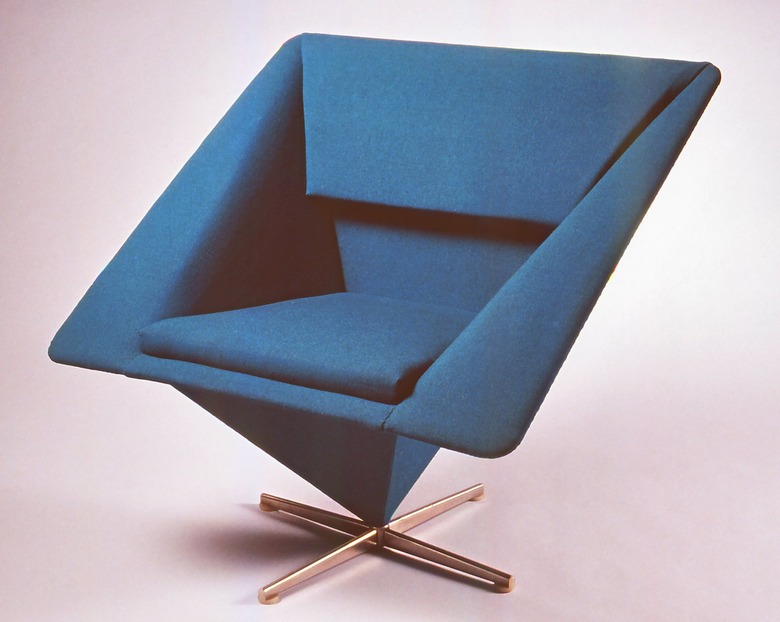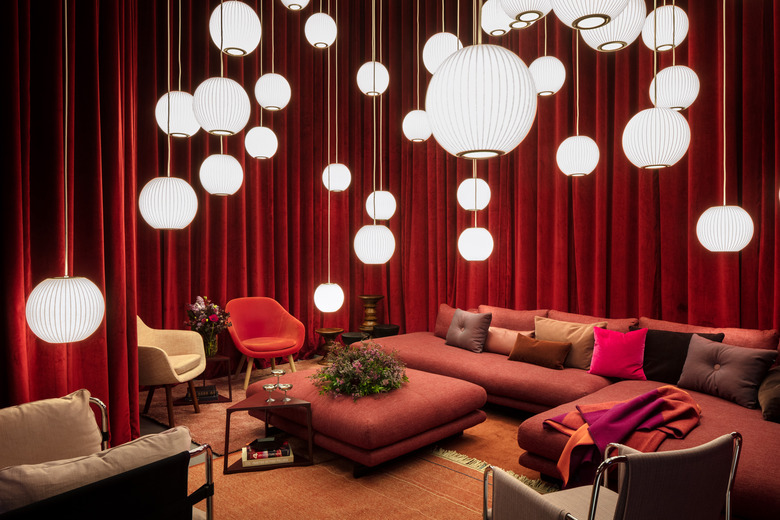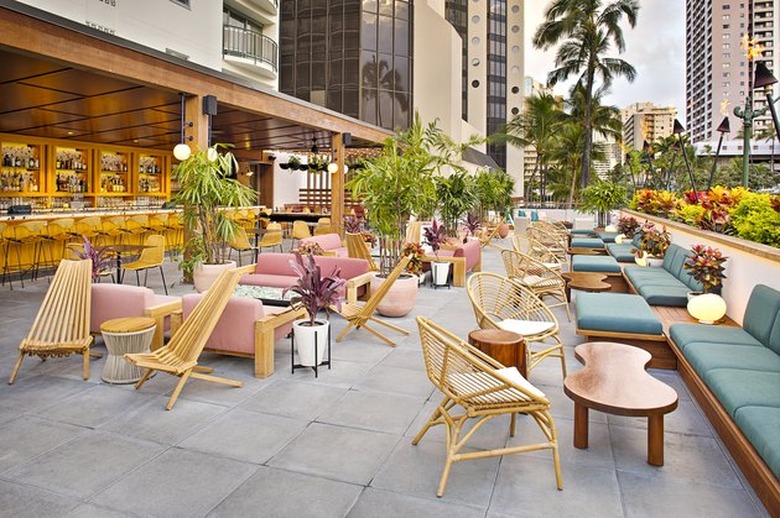Midcentury Modern Style: History, Characteristics, Key Figures & Design
Some of the most common elements of modern homes actually trace back to a very specific movement — midcentury modern design. When it comes to modern homes, elements like large windows, art-inspired facades, and boxy shapes all owe their origins to the time period dating from roughly the 1940s to the 1960s. The style of many decor items we love today also originated during this time period. Think hairpin legs, smooth wood surfaces, bold colors, and egg-shaped chairs.
The midcentury modern era continues to influence our decor and design styles to this day. And while many midcentury objects now cost a pretty penny and make their way into collectors' arms, the idea behind the era was actually to make furniture more accessible and affordable. Designers took inspiration from nature but also sculpture and abstraction.
Here, we take a dive into the history of midcentury modern, its lasting influence, and how you can incorporate the style into your own space today.
The History of Midcentury Modern Design
Let's start with some of the context around how these designers created their now-iconic pieces. Post-World War II, countries around the world were ready to think about reconstruction. The U.S. in particular shifted much of its attention to the home of the future — and how the average American could afford practical yet chic furniture items.
Both design enthusiasts and your average family yearned for comfortable, practical, and affordable pieces. And designers experimented with everything from shape to materials in response. For starters, a number of materials not originally used in furniture became the key to new designs. The war period restricted the use of many materials but with WWII over, designers now had more access to them.
Journalist Cara Greenberg is often credited with creating the term midcentury modern. In 1984, her book Mid-Century Modern: Furniture of the 1950s catalogued this boom in design. She highlights the period from 1945 to 1960 as a time of "unusual brazenness and adventurousness for the world design community." Some sources also trace this influential time to pieces created just a bit earlier, in the 1930s.
The importance of midcentury style and design as a form soon caught the attention of institutions. In 1940, the Museum of Modern Art held a competition for its exhibition Organic Design in Home Furnishings. The 1941 exhibition displayed the work of now-iconic names like Charles Eames and Eero Saarinen, who won awards as a team for "seating for a living room" and "other furniture for a living room."
Fast-forward to today and you can find many museums highlighting this important work, especially in the American and Decorative Arts departments.
The midcentury modern style extended to countries around the world, with designers hailing from — or completing projects in — places like Brazil, Scandinavia, India, Denmark, Italy, Japan, and more.
It also helps that designers of this era often traveled to other countries. They felt inspired upon returning, often taking elements from different craft and design styles and incorporating them into their work.
With each new inventive design over the decades, these midcentury minds learned to build on the history of furniture.
And we'd be remiss not to mention the overlap between the art and design worlds during this unique time period. Museums encouraged this era of experimentation. Some of the movement's biggest names were also artists in their own right, like acclaimed sculptor Isamu Noguchi.
This "close synergy" writes Dominic Bradbury in Mid-Century Modern Complete, explains why "furniture design became increasingly sculptural in quality" during the time period. Pieces started to look less like your average chair and more like abstract, art-like pieces. Where you might expect a flat surface, you instead saw something rounded. And where you might expect classic chair legs, you might find organic and fluid shapes (or no chair legs at all).
Characteristics of Midcentury Modern Design in Furniture
Each designer brought their own aesthetic inclinations to their pieces. Some took an abstract approach, others a more industrial one. But all of their contributions changed the shape of furniture, houses, textiles, and more to embrace new shapes and patterns.
Tracing the influence of this era means taking a look backward, too. According to the National Gallery of Art, furniture styles in the U.S. basically "followed English fashion" from as early as 1650 through 1850. Popular chair design styles included the American Windsor chair; a variation of the English design, it heavily featured the use of spindles.
Even in the early 1900s, the design for chairs didn't change much beyond what you might expect. Take, for instance, this piece from 1909 England — pretty standard and very much like what you would envision a chair to look like.
In the 1920s, Hungarian architect Marcel Breuer experimented with tubular metal to create new designs. One of these includes the B5 side chair, which quickly grew in popularity. You can start to see some of the midcentury modern style in the piece, with its clean lines. And, most importantly, it shows innovation when it comes to its use of materials. Breuer's designs influenced generations of designers to come.
With the midcentury modern era in full swing, designers wanted to explore what items like your regular old chair could look like.
"By the 1950s, the character of mid-century furniture in general was increasingly sinuous and fluid, with tapered legs, smooth finishes and crafted forms," Bradbury writes.
An easily recognizable example: the hanging egg chair from 1959. Husband-and-wife duo Nanna and J_ø_rgen Ditzel designed this round chair after realizing that their space contained way too many furniture legs. Richardson writes that their design was influenced by travels in Mexico and Greece, after the duo received the prestigious Lunning Prize.
This solution-driven creative thinking definitely exemplifies the midcentury modern style. You can now get the chairs from Sika-Design, based in Denmark. And, of course, there are plenty of modern, whimsical egg chairs available today.
The abstract style of this era also got shaped — quite literally — by new and available materials. Manufacturers wanted to figure out a way to mass-produce items and get them into as many American homes as possible. Designers started tinkering with what would happen if they tried using materials never before thought of for furniture. Many of the designs and objects that we now associate with midcentury modern furniture (and homes), were sparked by new possibilities in materials and mass production.
As Lauren Whybrow points out in From A to Eames: A Visual Guide to Mid-Century Modern Design, polypropylene didn't even exist until 1954; it became the material for British designer Robin Day's stackable chairs, which debuted in 1963.
The fascination over this design continues, with a relaunch by original manufacturer Hille happening as recently as 2017. Along with Lucienne Day, a textile designer, Robin Day made a lasting impact on British design and midcentury design at large.
Other materials from wartime — like metal and plywood — also made their way into these new items.
You can probably spot a midcentury piece today if you walk into a room, but when these items debuted they really shook up the design world — both on an aesthetic and practical level. We might take stackable and egg chairs for granted now but just imagine what it would feel like seeing them for the very first time.
It all came down to the details, too. Some pieces, like the "Artichoke" lamp by Poul Henningsen, took inspiration from nature. Many decor items from the era find a way to infuse a sense of play into timeless designs.
You might also recognize the era's sunburst clocks. George Nelson served as Herman Miller's design director, working with the manufacturer for more than 25 years. During his tenure, Irving Harper designed these classic pieces.
Midcentury Modern Design in Textiles
Textiles from the era — like those of Lucienne Day — featured bold colors and geometric shapes. Founded in 1951, the Finnish company Marimekko introduced patterns that also took the fashion world by storm. Maija Isola contributed a number of now-iconic designs inspired by travel and nature.
In 1960, Marimekko made a splash when Jacqueline Kennedy bought seven dresses by the designer. Again, the entrepreneurial spirit of the era comes through: When founder Armi Ratia realized that shoppers wanted ready-made clothing, not just textiles to make their own pieces, she hired a textile designer and continued to build out her team.
Midcentury Modern Design in Homes and Architecture
Midcentury modern homes also broke the mold of what homeowners and city leaders expected. Some made unconventional use of glass (like Ludwig Mies van der Rohe's Farnsworth House), while others rose aboveground as if floating (like Lina Bo Bardi's Casa de Vidro, or Glass House). Eero Saarinen's 1940s North Christian Church in Columbus, Indiana, took an equally unconventional approach. On the other side of the world, areas like Brasília (the capital city of Brazil) were transformed by architects like Oscar Niemeyer. Upon its completion in 1960, it looked a lot like something from the future.
Of course, Ray and Charles Eames turned out to be one of the most iconic design duos of the era. Their Eames Office produced everything from homes to tables to chairs. The Eames House (also known as Case Study House 8), highlights many of the elements of midcentury homes. It incorporates itself into nature while also taking inspiration from visual art (note the Mondrian-like exterior).
As these designers and architects gained more recognition, critics and the general public alike wanted to see more of their work. Enter the Case Study House program, which hoped to explore what a functional and comfortable house might look like in the years after WWII. The project, helmed by Arts & Architecture magazine's editor and owner John Entenza, focused on recruiting architects to build all-new houses in California. Part of the editor's note from January 1945 on the program reads:
"Eight nationally known architects, chosen not only for their obvious talents, but for their ability to evaluate realistically housing in terms of need, have been commissioned to take a plot of God's green earth and create 'good' living conditions for eight American families."
Entenza planned to use land that he owned in Pacific Palisades as a space for these houses. From February onward, the magazine decided to highlight each of these homes with insights from the architects. Documents show that the magazine commissioned more than 30 designs in the end (sources differ, with the number floating around 36), although not all of them made it to the magazine or to full fruition. Others — like the Stahl House — went through many rounds of rejections and didn't get fully built until much after the announcement of the project. The designs were meant to be forward thinking and also easily reproducible so that families in the U.S. could live in them one day.
Overall, the project meant to shed light on the many possibilities for the new American home:
"We hope it will be understood and accepted as a sincere attempt not merely to preview, but to assist in giving some direction to the creative thinking on housing being done by good architects and good manufacturers whose joint objective is good housing."
You can currently tour a few of these houses, such as the Stahl House in West Hollywood, California, and the Eames House in Pacific Palisades, California. Others currently serve as private residences. In the end, this unique program resulted in a group of the movement's most iconic homes and most classic examples of midcentury architecture.
The Key Figures of Midcentury Modern Design You Should Know
Midcentury modern style came together thanks to creative minds hailing from a range of nationalities. While by no means an exhaustive list, here are some of the influential names from the era that you should know:
Ray and Charles Eames, Designers, United States
Alvar and Aino Aalto, Architects and Designers, Finland
Finn Juhl, Architect and Designer, Denmark
Eero Saarinen, Architect and Designer, Finland
Lucian R. Ercolani, Designer, Italy (worked in U.K.)
George Nelson, Designer and Director of Design for Herman Miller, U.S.
Walter Gropius, Architect and Founder of the Bauhaus School, Germany
Le Corbusier, Architect and Designer, Switzerland (Swiss-French)
John Lautner, Architect, U.S.
Richard Neutra, Architect, Austria (worked in the U.S.)
Joseph Eichler, Real Estate Developer, U.S.
Ludwig Mies van der Rohe, Architect, Germany (worked in the U.S.)
Oscar Niemeyer, Architect, Brazil
Harry Bertoia, Designer and Artist, Italy (worked in U.S.)
Isamu Noguchi, Sculptor, Architect, and Designer, U.S. and Japan
Arne Jacobsen, Architect and Designer, Denmark
Gio Ponti, Architect and Designer, Italy
Robin and Lucienne Day, Designers, England
Eero Aarnio, Designer, Finland
Verner Panton, Designer, Denmark
Manufacturers:
Hille
Midcentury Modern's Revival in Today's Design
The influence of midcentury modern design can still be easily felt when it comes to modern design. For starters, pop culture series like Mad Men reintroduced generations to the classic look of the era. If you browse the internet, you can find plenty of think pieces on why the style seems to survive the decades. Things like spherical lighting and modular furniture still make appearances in some of our favorite interiors, from celebrity to everyday spaces. The midcentury style seems to ring synonymous with classy, timeless aesthetics in today's spaces.
You can find plenty of midcentury modern-inspired designs at major retailers like Target, West Elm, CB2, and others. In the end, the style really did reach levels of mass production; elements like tapered legs, organic shapes, and more can be easily found in large-scale decor stores. Even stores that don't normally specialize in the style often feature a collection of midcentury-inspired items.
In addition, many modern spaces today mix and match elements of midcentury modern with contemporary elements. We've highlighted spaces that pair midcentury furniture with a boho aesthetic; we also found inspiration in this modern Hawaiian hotel with midcentury influences.
Whether it's through shopping for unique items or taking on a DIY project, there are plenty of ways to pay homage to this influential era.
The products we write about are recommended by our editorial team. Hunker may earn compensation through affiliate links in this story.
